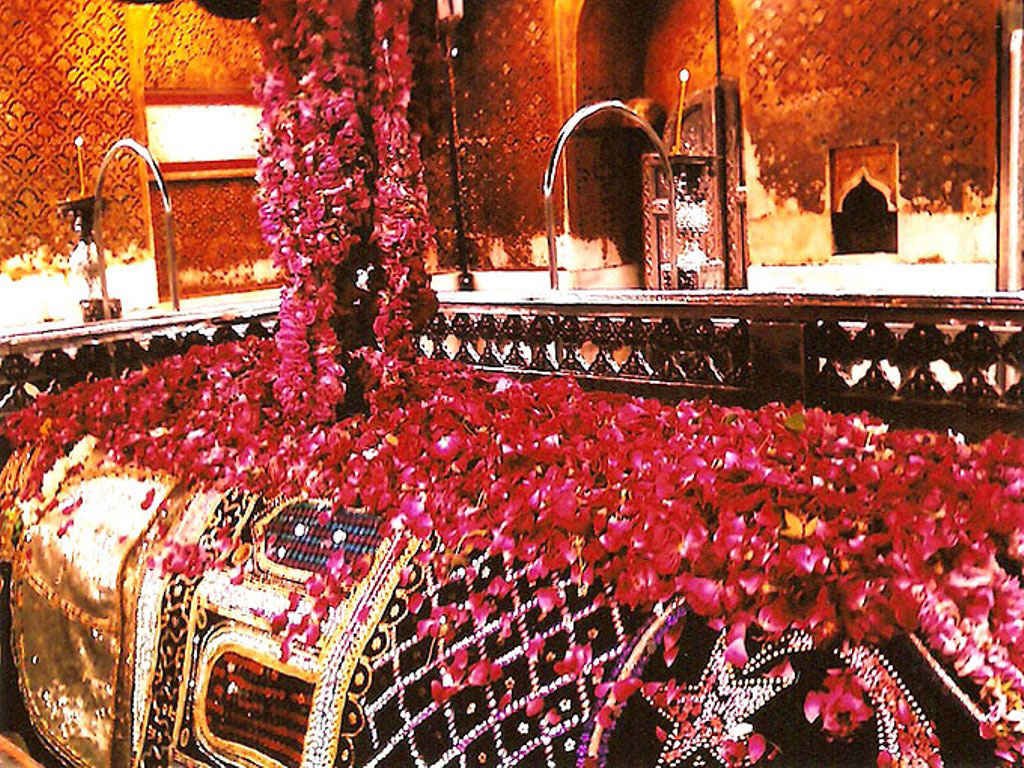Urs Festival, Ajmer

Normally held in the long stretch of May and June, the Urs Festival is one of the real celebrations celebrated at the adored Ajmer Sharif Dargah. Swarms of explorers travel to this town, situated toward the West of Jaipur to visit this blessed holy place. The Urs Festival recognizes the demise commemoration of Khwaja Moinuddin Chisti, the respected Sufi Saint. The reasonable is held for six days since it is trusted that the Khwaja Moinuddin cooked for six days before he left his human remains. His supporters from everywhere throughout the world crowd Ajmer to look for his gifts amid these six consecrated days.
Urs – India’s Biggest Muslim Fair at Dargah Ajmer Sharif
Dargah Ajmer Sharif sees India’s Biggest Muslim Fair. Alongside customary practices and ceremonies, a huge number of fans crowd on the delightfully brightened Chadar, Neema, and Chiefs which are offered at the Dargah. Plus, Bazar of Dargah Ajmer Sharif loads up with religious articles, aromas, sandalwood glue, rosaries, silver adornments, books, and weaving floor coverings.
Why Urs Festival is commended in Ajmer Sharif

Urs is commended upon the arrival of the association (Fana) of Khwaja Moinuddin Chishti with an all-inclusive soul.
At the point when Urs Festival is commended at Ajmer Sharif Dargah
Urs is commended in the long stretch of Rajab in the Islamic Calendar.
Khwaja Garib Nawaz left for glorious homestead 1256 AD following a six-day petition in disengagement. These six days are praised each year as the yearly Urs, which is gone to by countless explorers regardless of their confidence.
The place of worship had turned out to be a standout amongst the most imperative habitats for the dispersion of composite culture that had struck profound roots in the mind of both the Hindus and Muslims. In this manner, the consequence of the long relationship of the Hindus with the sanctum can be evaluated from the traditions at the Dargah by the Muslims and Hindus alike. For instance putting Lachcha (red and yellow strings) around the neck or hand of the enthusiasts, sticking of the shoe at Mazar and tying of strings at the place of worship as a sign of pledges (mannat), splitting of coconuts at the entryway ventures of Dargah, and the lighting service at residue and so on are emblematic of the developing of composite culture.
The Urs is held at Ajmer, Rajasthan consistently at the tomb of the Sufi Saint Khwaja Moinuddin Chisti, remembering his representative association with God. It is praised from the first to the sixth day of Rajab; the seventh month of the Islamic calendar.
Travelers from everywhere throughout the world assemble to pay respect. The festival is started by the raising of a white banner on the dargah by the ‘Sajjada Nashin’ – successor illustrative of the Chistis, to the backup of music. The tomb is washed with rosewater and secured with a weaved silk material. Qualis (lyrics) are introduced in the holy person’s respect and religious gatherings (mehfils) and ‘faith’ (mass supplications) are held. Kheer is circulated among the aficionados as favored sustenance.
The much regarded holy person who originated from Persia, built up the Chishti request of ‘fakirs’ in India. The pioneers make contributions of blossoms, sandalwood glue, incense, cash, and votive contributions which they bring carrying on their head at the spot where he is covered.
The lakeside town of Ajmer additionally called Ajmer Sharif (blessed) wakes up amid the Urs which draws in a great many lovers regardless of standing, religion, and so on. At the tremendous reasonable; the biggest Muslim reasonable in India, that jumps up right now, religious articles, books, rosaries, weaved covers, and silver trimmings are at a bargain.
About Khwaja Moinuddin Chishti

Conceived in Afghanistan in the year 1141, Moinuddin Chishti swung to India as guided by Muhammad and built up the Chishti Order of Sufism in the Indian subcontinent. Prevalently known as Gharib Nawaz (supporter of poor people), the holy person lectured bolstering the hungry and aiding those in trouble as the most conspicuous types of commitment towards God. Upon death, he was covered in a tomb at Ajmer. The tomb procured the status of a hallowed place and is famous worldwide as Ajmer Sharif or Dargah Sharif.
When is Ajmer Urs Festival Celebrated

Urs of Moinuddin Chishti is held in the main seven day stretch of Rajab, the seventh month of the Islamic logbook. It is trusted that amid the most recent year of his life, Saint Chishti went through the initial 6 days of Rajab separated in a supplication room and kicked the bucket on the 6th day. Consequently, the celebration is praised for six days corresponding with the initial 6 days of Rajab consistently.
